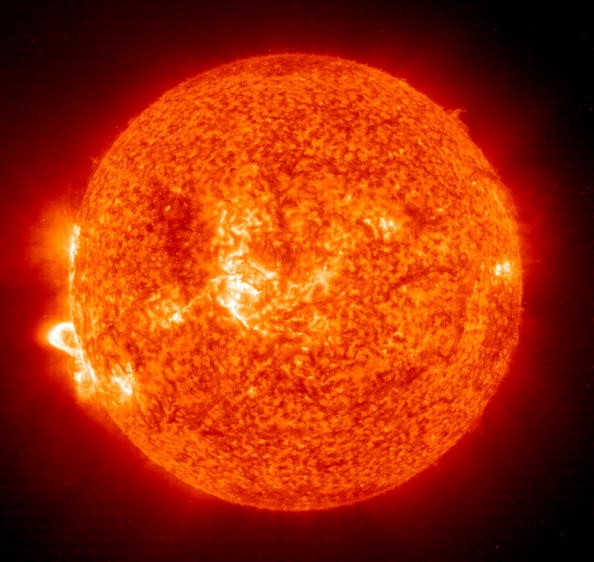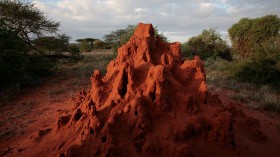A huge sunspot on the Sun 's atmosphere is spinning towards visibility from Earth and might be approaching Earth soon next week.
These sunspots are darker, colder patches on the Sun's surface that often appear across locations of significant magnetism. When such energy is released, solar flashes and huge storm known as coronal mass ejections (CME) erupt.
When a huge solar flare or CME is launched in the vicinity of Earth, this results flow of power may have a broad range of effects, from bright aurora at northern latitudes to catastrophic devastation of all matters electrical on a global scale.
As per NOAA's Space Weather Prediction Center (SWPC). "Region 2887 (S24E58, Dao/beta) generated many B-class outbursts throughout this time," according to the report.
Luckily, the SWPC notes that no Earth-directed CMEs have been seen at this moment.
Potential Solar Flares May Cause Bad Weather

The sunspot region has more than increased in size in the just 24 hours. It also looks that the unstable zone surrounding it has gotten increasingly complicated, which might indicate the possibility of a coronal hole.
A massive disruption exploding from Sun has the potential to cause a thunderstorm on Earth. Magnetosphere cyclones are classified on a scale of 1 to 5, with 1 being the weakest and 5 as strongest.
Aurora, or 'Northern Lights,' may be observed from northern Michigan and Maine to places north at high latitudes. As the geomagnetic storm scale increases, so do the damages and aurora.
Although there are concerns that a potential solar explosion may interrupt electrical, telecommunication, and online media connections for weeks, there is no evidence of such an event occurring from AR2887 at this time. Researchers will wish to learn that and other solar disruptions for possible fallout on Earth in the days ahead.
The Sun can be conceived of as passing through a 'stormy' era in which its atmosphere is much more dynamic than usual at times. When this occurs, the Sun is able to emit torrents of energetic electrons in all ways. When these charged particles collide with the outer fringes of our environment, the aurora borealis and aurora australis can occur.
Also read: 7.1 Magnitude Earthquake in California Leaves Big Cracks on the Ground as Seen from Space
Study About The CME
Coronal holes manifest as black spots on the Sun since they are colder than neighboring plasma and have exposed magnetic field lines, according to the Space Weather Prediction Center. These black patches emerge in the Sun's outermost section of its environment, referred as corona. During the previous solar eclipse, the solar corona was also one of the major aspects of the Sun that researchers have been most glad to learn. These characteristics may be seen in intense ultraviolet (EUV) and soft x-ray solar pictures.
The Sun rotates once each 27 days, and coronal holes can occasionally endure many rotations. It is usual to witness continuous coronal holes around the Sun's north and south poles, and they can occasionally grow across the equator, leading in a bigger area. Coronal holes around the Sun's equator typically cause in quicker solar wind entering to Earth. Coronal holes frequently cause G1-G2 geomagnetic storming intensities, and on rare instances, G3 levels have been observed.
NOAA analysts must study various traits and factor them into each projection. If Earth is suffering the repercussions of a coronal hole and a coronal mass explosion is predicted to reach Earth, the cumulative impacts might lead to a larger approach and far more violent geomagnetic blast. Meteorologists can predict when heightened solar radiation from a coronal hole will reach at Earth by data analysis from the DSCOVER and ACE satellites.
Although these solar flares can dramatically brighten the horizon with beautiful auroras, they can also cause significant damage to devices, power grid, and geostationary and wireless connections.
Also read: CDC Raised Warning on Salmonella Outbreak Across 37 States Linked to Onions
© 2024 NatureWorldNews.com All rights reserved. Do not reproduce without permission.





